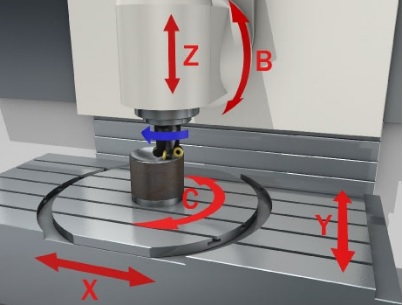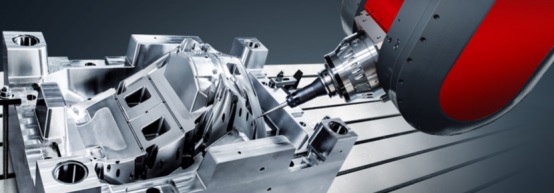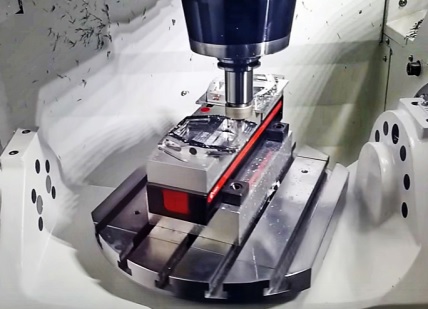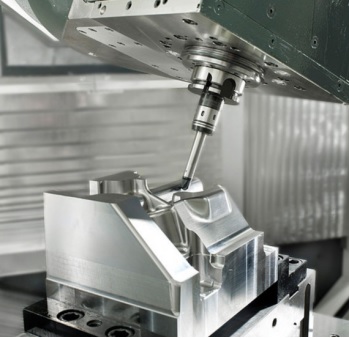What is 5-axis CNC Machining? Do You Really Understand 5-Axis CNC Machining?
What is 5-axis CNC machining?
5-axis machining, as the name implies, is a type of CNC machining. The linear interpolation motion of any 5 coordinates in X, Y, Z, A, B, and C is adopted. The machine used for 5-axis machining is usually called a 5-axis machine or a 5-axis machining center. But do you really understand 5-axis CNC machining?

Development of 5-axis technology
For decades, people generally believe that the five-axis CNC machining technology is the only means of processing continuous, smooth, and complex curved surfaces. Once people encounter unsolvable problems in designing and manufacturing complex curved surfaces, they will turn to five-axis machining technology. However, five-axis linkage CNC is the most difficult and the most widely used technology in CNC technology. It integrates computer control, high-performance servo drive and precision machining technology, and is applied to the efficient, precise and automated processing of complex curved surfaces. Internationally, 5-axis linkage CNC technology is regarded as a sign of a country's production equipment automation technology level. Due to its special status, especially the important influence on aviation, aerospace, military industry, and technical complexity, Western industrialized countries have always adopted the five-axis CNC system as a strategic material to implement an export license system.

Advantages of 5-axis CNC machining
Compared with the 3-axis CNC machining, from the perspective of technology and programming, the use of five-axis CNC machining for complex curved surfaces has the following advantages:
1. Single Setup
A 5-axis machine allows you to work on every surface, apart from the clamping area and the bottom. When working on contoured parts or parts that require machining on several faces, you need several setups of the 3-axis machine to achieve the complex geometry through manual rotating; 5-axis technology completes the job in a single set up, reducing the number of setups and helping you save time.
2. Complex Designs
The additional movement available with 5-axis machining allows you to achieve complex shapes and designs. With the 5-axis machine, you have access to machining angles and arcs that were previously achievable only through multiple setups and a myriad of special fixtures. Ultimately, 5-axis machining eliminates the need to create complex fixtures as you can hold the part once and rotate in a single process to achieve the desired geometry.
3. Rotational Accuracy
Every time you remove a part from a machine, you lose the precise alignment that allows you to achieve superior quality. Unlike 3-axis machining, 5-axis machining improves accuracy by allowing you to complete a task in a single set up, and create multiple and complex shapes without losing the precision required to maintain quality.
4. Faster Material Removal
In 5-axis machining, the cutting tool remains tangential to the cutting surface, allowing for low cycle times, which helps save costs as you remove more material each time the tool passes.
5. Better Surface Finishes
The fourth and fifth axes help you orient and bring the part closer to the cutting tool, allowing you to use a shorter cutting tool, which is less susceptible to vibration at extremely high cutting speeds, helping you achieve a better surface finish. It also saves you time; when using a 3 axis machine, you must make use of very small cuts to achieve a good surface finish, which leads to longer lead times.
6. Improved Tool Life
You can maintain a constant chip load and optimum cutting position, which improves the cycle time and life of the tool.

6-Axis Machining vs. 3+2 Axis Machining
5-axis machining offers three linear axes and two rotational axes that work simultaneously to achieve complex surface machining. The 3+2-axis machining offers a 3-axis milling process, with two additional axes to rotate the holding tool in a fixed position as opposed to manipulating it repetitively during the machining process.
A 5-axis machine helps you work on tighter tolerances to achieve complex geometries while a 3+2 system allows you to hold your less complex parts in positions that allow better access to the features.
Difficulties and Resistance in Development of 5-axis CNC Machining
Everyone has long recognized the superiority and importance of 5-axis CNC technology. But so far, the application of the five-axis CNC technology is still limited to a few well-funded departments, and there are still unsolved problems.
1. 5-axis CNC programming is abstract and difficult to operate.
This is a headache for every traditional CNC programmer. 3-axis machine have only linear coordinate axes, and 5-axis CNC machine have various structural forms; the same segment of NC code can obtain the same processing effect on different 3-axis CNC machine, but the NC code of a certain 5-axis machine cannot be applied to All types of 5-axis machine. In addition to linear motion, CNC programming also needs to coordinate calculations related to rotary motion, such as rotation angle travel verification, non-linear error check, and tool rotary motion calculation. The amount of processed information is large, and NC programming is extremely abstract.
The operation and programming skills of 5-axis CNC machining are closely related. If users add special functions to the machine, programming and operation will be more complicated. Only through repeated practice, programming and operating personnel can master the necessary knowledge and skills. The lack of experienced programmers and operators is a major obstacle to the popularization of five-axis CNC technology.
2. Very strict requirements for NC interpolation controller and servo drive system
The motion of a 5-axis machine is a synthesis of 5-coordinate axes. The addition of rotating coordinates not only increases the burden of interpolation calculations, but the small errors in rotating coordinates will greatly reduce the machining accuracy. Therefore, the controller is required to have higher calculation accuracy. The motion characteristics of the 5-axis machine require that the servo drive system has good dynamic characteristics and a large speed range.

3. 5-axis NC program verification is particularly important
To improve the efficiency of machining, it is urgent to eliminate the traditional "trial cutting method" verification method. In the five-axis CNC machining, the verification of the NC program also becomes very important, because the workpieces usually processed by the 5-axis CNC machine are very expensive, and collision is a common problem in the 5-axis CNC machining: the tool cuts into the workpiece; the tool It collides with the workpiece at a very high speed; the tool collides with the machine, fixture and other equipment within the processing range; the moving parts on the machine collide with the fixed parts or the workpiece. In five-axis CNC, collisions are difficult to predict, and the calibration program must perform a comprehensive analysis of the machine kinematics and control system.
If the CAM system detects an error, it can process the tool path immediately, but if an NC program error is found during the machining process, the tool path cannot be modified directly as in a three-axis CNC. On a 3-axis machine, the machine operator can directly modify parameters such as tool radius. In five-axis machining, the situation is not so simple, because changes in tool size and position have a direct impact on the subsequent rotary motion trajectory.
4. Postprocessor
The difference between a 5-axis machine and a 3-axis machine is that it also has two rotation coordinates. The tool position is converted from the workpiece coordinate system to the machine coordinate system, and several coordinate transformations are performed in the middle. Using the popular post-processor generator on the market, it is only necessary to input the basic parameters of the machine to generate the post-processor of the 3-axis CNC machine. For the 5-axis CNC machine, there are currently only some improved post-processors. The post-processor of the 5-axis CNC machine needs to be further developed. Nonlinear errors and singularities
Due to the introduction of rotating coordinates, the kinematics of a 5-axis CNC machine is much more complicated than a 3-axis machine. The first problem related to rotation is a non-linear error. Non-linear errors should be attributed to programming errors, which can be controlled by reducing the step size. In the pre-calculation stage, the programmer cannot know the size of the non-linear error, and the non-linear error can only be calculated after the machine program is generated by the post-processor. Linearization of the tool path can solve this problem. Some control systems can linearize the tool path while machining, but they are usually linearized in the post-processor.
Another problem caused by the rotation axis is singularity. If the singular point is at the extreme position of the rotation axis, a small oscillation near the singular point will cause the rotation axis to rotate 180°, which is quite dangerous.Requirements for CAD/CAM system
For the operation of pentahedron processing, users must resort to mature CAD/CAM systems and must have experienced programmers to operate the CAD/CAM system.
5. Large investment in machine purchasing
Previously, the price difference between 5-axis machine and 3-axis machine was very large. Now, the addition of a rotary axis to a 3-axis machine is basically the price of an ordinary 3-axis machine. This machine can realize the function of a multi-axis machine. At the same time, the price of 5-axis machine is only 30% to 50% higher than the price of 3-axis machine.
In addition to the investment in the machine itself, the CAD/CAM system software and post-processor must be upgraded to adapt to the requirements of 5-axis machining; the verification program must be upgraded so that it can simulate the entire machine.


